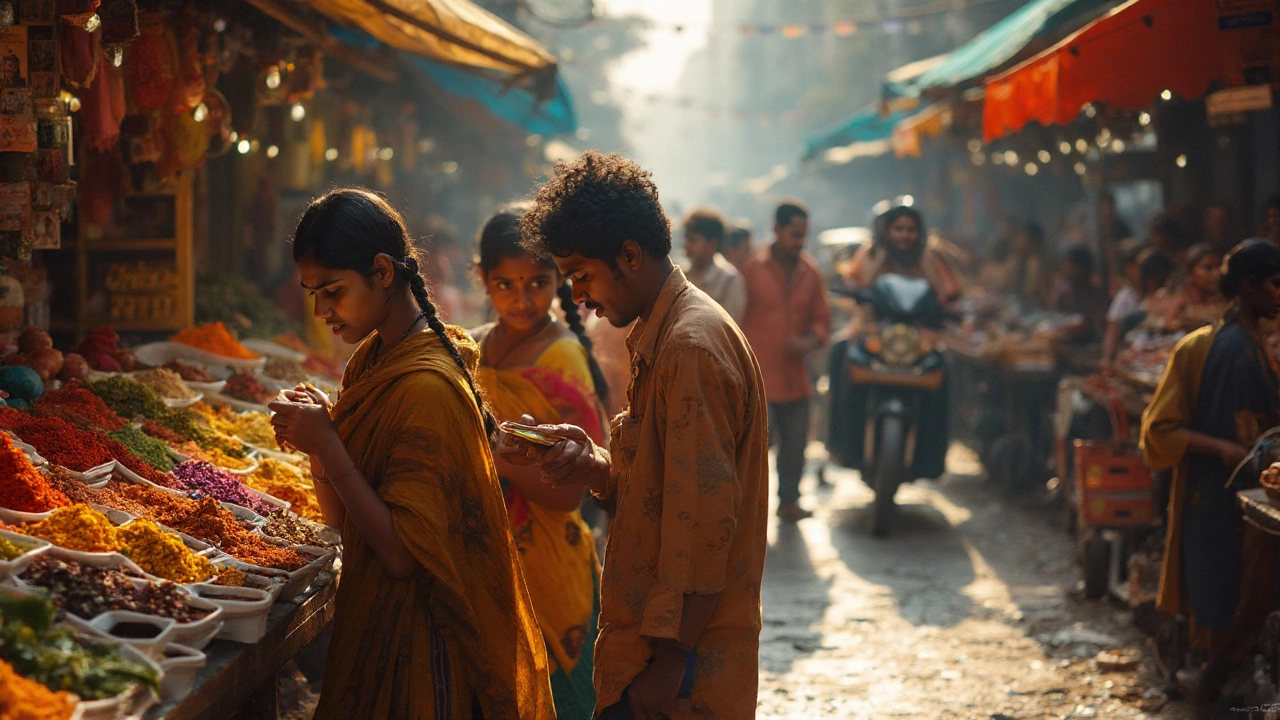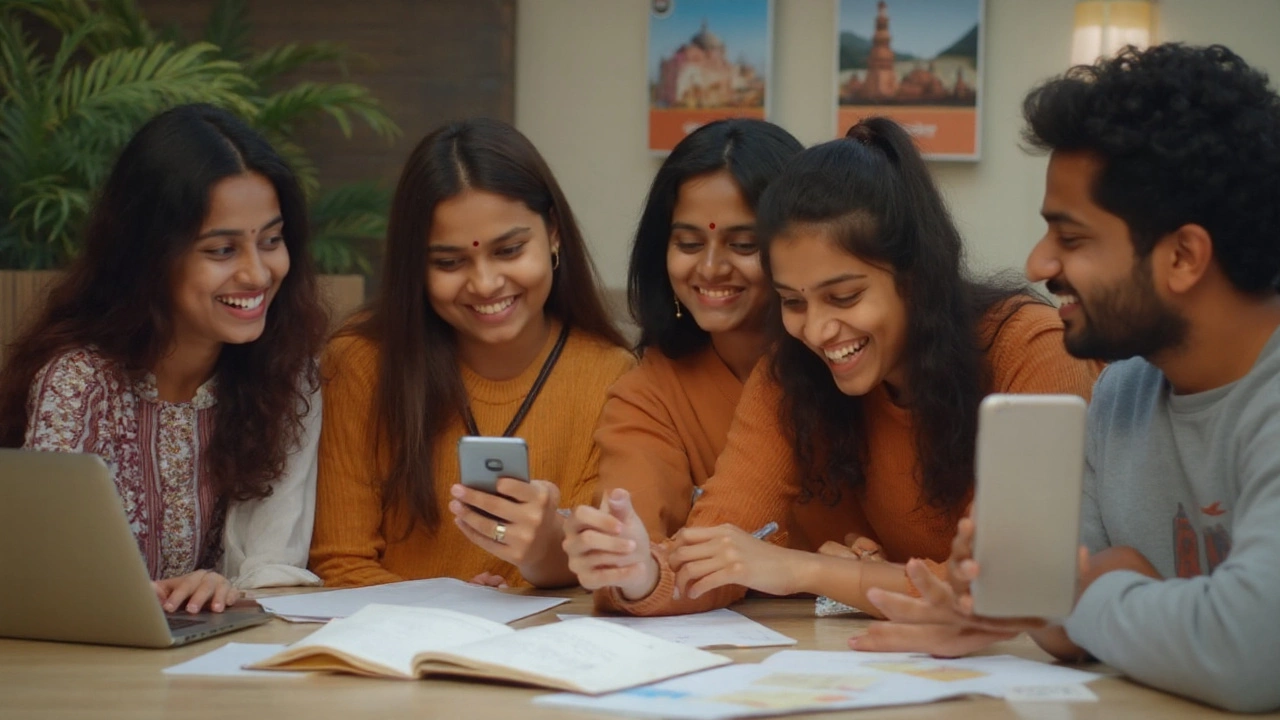Is 10,000 Rupees a Lot in India? Real-Life Value & What It Gets You
 Aug, 4 2025
Aug, 4 2025
Back in 1947, you could buy a house in Pune for just over 10,000 rupees. Fast forward to August 2025, and that sum sparks a totally different conversation. Is it a fortune? Just chump change? Or something totally in between? Growing up, you might remember parents talking about a 'ten-thousand-rupee note' as if it was a unicorn—rare, full of promise, maybe even a little intimidating. But without all the hype and nostalgic tales, what does 10,000 rupees really mean in today's India?
The Basics: What 10,000 Rupees Means in Daily Life
10,000 rupees. In dollar terms, that's about $120 in 2025 money, give or take (it’s hovering around 83 rupees to 1 USD right now). In other words, it’s not lottery win territory. But it isn’t just pocket change either. For someone on minimum wage—whose official monthly pay barely skims that 10k mark—it could be close to an entire month’s salary. For middle-class folks in big cities, though, it might barely fill half their grocery cart. Context is king.
Let’s break it down a bit. What can you actually do with ten thousand rupees in India today? A typical bowl of masala dosa with filter coffee costs under ₹200 at a regular eatery. A stylish pair of branded sneakers at a mall? That’s pushing ₹5,000 or more. Renting a modest 1-bedroom apartment in Mumbai, even in an outer suburb, will probably set you back around ₹15,000-₹25,000 just for the rent—utilities extra. But head to Indore or Kochi, and ₹10,000 could get you a decent pad in certain neighborhoods. So, the simple answer: what you can do with this sum totally depends on where you live, how you live, and what you’re looking for.
What You Can Buy: Real Prices in Today’s India
Let’s get specific. Here’s a quick snapshot of what you’d spend on common stuff in various Indian cities these days. (Remember, prices can swing by as much as 30% between tier-1 metros and rural towns.)
| Item/Service | Mumbai | Bangalore | Lucknow | Small Town |
|---|---|---|---|---|
| Basic Lunch (Restaurant) | ₹350 | ₹300 | ₹200 | ₹120 |
| 1BHK Rent (Monthly, Avg.) | ₹24,000 | ₹22,000 | ₹12,000 | ₹6,500 |
| Cinema Ticket | ₹350 | ₹280 | ₹220 | ₹120 |
| Internet (Monthly) | ₹700 | ₹850 | ₹530 | ₹480 |
| Petrol, 1L | ₹104 | ₹102 | ₹99 | ₹98 |
| Liter of Milk | ₹65 | ₹62 | ₹54 | ₹42 |
So, if you treat yourself and a friend to a nice dinner at a mid-range spot in Mumbai, you’re down ₹2,000. Buy a new shirt, get groceries for the week, and a few rides on Uber, and that 10k balance can vanish before the next weekend. In a small town, though, it could cover stable groceries for an entire month, or even two. That’s why you see some people joking that "10k is just a shopping trip in Delhi and a survival kit in Ranchi." Both are kinda true.
Electronics are another story. Want the latest mid-range smartphone? Most decent ones in 2025 cost at least ₹18,000. Laptops for basic use? They’re rarely found below ₹20,000 today, unless you’re going for refurbished or off-brand models. On the other hand, a basic mobile phone—the ones used by gig workers—still goes for as little as ₹1,200. So for tech, you’ll need more than just a ten-thousand note most of the time.

10,000 Rupees for Travelers: Stretch or Splurge?
If you’re planning a short trip in India, is 10,000 rupees a windfall or just a drop in the ocean? Depends on your style. Backpackers on shoestring budgets can pull off entire week-long trips with this sum, if they stick to homestays, guesthouses, and local eateries (think ₹500-700 per night for a bed, ₹70 for a chai and samosa, ₹180 for a thali meal). Book trains in advance and use government buses, and you could zigzag around three states.
But load up on Uber rides, grab drinks at posh city bars, or stay in an air-conditioned hotel—even a 3-star joint—and your cash can disappear in a couple of days. India's major tourist cities (Jaipur, Delhi, Mumbai, Goa) tend to price everything a notch higher than elsewhere. If spas, resorts, and shopping are your game, start with at least ₹20,000 unless you're just on a overnight stop.
Here's a realistic itinerary for budget-conscious travelers keeping things under ten grand:
- 4 nights in guesthouses or hostels (₹2,000 total)
- 3 sleeper-class train rides (₹900)
- Daily street food meals (₹1,000 for a week)
- Public transport within cities (₹300)
- Entry fees at popular sites (₹800)
- Shopping and random indulgences (₹1,500)
With some change left over! But if you go upmarket just once or twice, you might easily double your expenses. Another pro-tip: festivals, especially between October and January, spike everything from hotel rates to auto fares by up to 60%. So that ₹10k will suddenly feel half as powerful.
On the flip side, if you travel with family or in a group, pooling your ₹10,000 notes is the trick. Splitting taxis, foods, and stays drops costs per person fast. A lot of tours, especially guided temple and heritage walks, are affordable (₹500-800 per head) and can help you stretch those bills, especially outside big metros.
Perspective: How Indians See 10,000 Rupees Today
Is 10,000 rupees a big number these days? The answer changes depending on who you talk to—and where. For college students from small towns, it can mean a month’s rent, food, and nights out combined if they’re smart about it. For gig workers like food delivery riders or construction helpers, 10k is right around a typical monthly payout—enough to keep things moving but never quite enough for big dreams. India’s middle class, especially double-income households in metros, probably see 10k as about a week’s worth of groceries and not much more.
Digging into some recent data (from the Reserve Bank of India reports and National Statistical Office):
- A typical urban household spends roughly ₹18,000 on monthly groceries and essentials in 2025.
- A 2024 UNDP survey found that 60% of Indians consider anything above ₹5,000 a "large single spend"—but only 14% say amounts above ₹10,000 make them nervous these days.
- The Indian middle class now makes up more than 400 million people, but income differences between metros and smaller towns are bigger than ever.
Cash distribution is also skewed. In cash-dependent rural areas, most day-wages are still below ₹500, and a sudden 10,000 rupees could be next-level. It might go into buying a scooter, fixing a roof, or covering a health emergency. But if you ask an IT worker in Hyderabad or Chennai, ₹10,000 is barely a bump in the monthly budget—think phone bill plus a few dinners out.
And let’s not ignore the cultural side. In Indian weddings, it’s common for guests to gift money in envelopes. ₹10,000 is considered a respectable sum, and it will definitely put your envelope above the usual ₹501 or ₹1,001 notes. But for bigger city weddings, where five-star venues and destination themes rule, some folks start at ₹21,000 and up. So, the social 'wow' factor varies, too.
Here’s a quick tip: in urban areas, nobody blinks if you transfer ₹10,000 via apps like Google Pay or PhonePe, especially for splitting rent or group bills. But in rural setups, cash is still king, and a thick stack of ₹500 notes feels more impactful than a digital ping.
So, next time you hear someone say, 'I just blew 10k this weekend,' ask where and how. The answer can reveal a whole lot about their lifestyle, city, or state. What’s for sure? Across India in 2025, ten thousand rupees always has a story—sometimes it’s a night out, sometimes a safety net, and for some, it’s nearly everything they earn in a month.